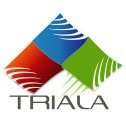Safety Signs
These signs are also known to many as ANSI signs and OSHA signs. There are many uses and applications for safety signs. The obvious and most common uses are Caution Signs and Danger Signs.
Signs that warn of high voltage, low overhead, vehicles nearby, heavy loads, no smoking, slippery surfaces, fire exits, and other industrial hazards are all available at a Trial sign center. The presence of medical waste, chemicals, flammable materials, radioactivity, corrosives, and many more are always noted through the use of safety signage.
Customers and businesses use our safety signs for constructions sites, warehouses, workshops, job sites, heavy equipment, hand tools, fire eradication tools, and fire escapes. Making a statement bold and easy to read protects the public from potentially hazardous situations. Our safety signs and compliance signs help make a workplace safe and secure. Spelling out the "dos" and "don'ts" at the playground, pool, or beach is another common use of our safety signs. In some instances, customers incorporate directional and wayfinding signs in their overall safety sign program.
Customers that use our safety signs include Oil & Gas sectors, schools, factories, warehouses, retail stores, recreation facilities, shopping malls, entertainment centers, stadiums and arenas, theaters, office buildings, restaurants, hotels and hospitality etc. Our safety signs and safety products are designed for use indoor and outdoor, day and night.
Safety signs in the workplace are an indispensable way of protecting employees from accidents. Their purpose is to convey information in a comprehensive way about objects and situations that can be dangerous. In case of a fire, for instance, well placed signs can speed up the evacuation of a building and help those giving first aid.
Common dangerous situations are:
- Exposure to harmful substances, gases or vapours. Machines being repaired or being in maintenance.
- Marked-out danger zones.
- Danger of falling objects.
- Trip hazards and slippery floors.
- Fast evacuation of contaminated places, etc...
The following methods can be used to reduce the risks of these dangerous situations:
- Safety signs that use symbols or text together with a recognised safety colour.
- Labels that identify products, leads, pipes etc.
- Safety lock systems for valves, installations etc.
- Posts, chains and tapes that can be positioned to indicate dangerous zones.
The psychology of colours
Colours play an important role when it comes to safety signs: they convey a message - and each safety colour has a specific meaning.
The colour of the sign specifies its nature: red signs are prohibitive;blue signs are mandatory;yellow signs are warnings; and green is used for safe condition and first aid signs.
Similar rules apply to the different shapes: prohibitive and obligatory signs are circular: warning signs are triangular; and oblong signs offer help and directions. All signs meet these requirements concerning colour and shape.

PPE Safety Signs
Personal Protection Equipments (PPE) safety signs are also known as mandatory safety signs alerts workers of hazards and creates an awareness in the work area demanding the need for these PPE Safety Signs. The most important and widely used PPE safety signs are displayed below.
Types of safety sign
Prohibition Signs, Fire Equipment Signs, Mandatory Signs (PPE Safety Signs), Safe Condition Signs and Warning Signs are the major classifications of Safety Signs.
Colours & shapes help distinguish between different categories of safety signs:

Fire equipment
Location of fire fighting equipment

Mandatory
A course of action which must be taken

Prohibition
Behaviours that are prohibited

warning
Danger, warning and caution

Safe condition
Escape routes and safety equipment
A note about colour:
BS colours are used and matched to pantones, screen inks and vinyls as closely as possible. Colours may vary slightly between sign batches, depending on method of production.
Sign sizes & viewing distances
These are approximate maximum viewing distances for safety signs. Legibility of text from distance is dependent on letter height, these distances are intended as a rough guide only.

Choosing materials
Safety signs are availble in the following range of materials & fixings. Material codes are shown in brackets.
-
(V) Self adhesive Vinyl:
Sign message printed directly onto a flexible PVC with a high tack adhesive backing. Suitable for both interior & exterior use. Ensure the sign is fixed to a smooth, clean & non-porous surface.
-
(R) Rigid PVC plastic (1mm/3mm):
Rigid, lightweight & inexpensive - suitable for both interior & exterior use. Either 1mm or 3mm thick, depending on the size of the sign.
-
(S) Rigid PVC plastic - self adhesive:
1mm PVC with self adhesive backing for easy fixing.
-
(F) Foam PVC:
Lightweight, durable & suitable for both interior & exterior use.
-
(H) High Impact Polystyrene Sheet (HIPS):
A very tough, durable material that will withstand wilful destruction. It is flammable (under intense heat) so would not be suitable for use in high risk areas.
-
(P) Photoluminescent PVC:
Charged by ambient light these signs immediately illuminate in sudden darkness. An excellent material for directional fire escape & fire equipment signs.
-
(C) Polycarbonate:
A very tough, durable material that will withstand wilful destruction. It has a good fire rating.
-
(W) Aluminium - wall fixed:
A lightweight durable material for both interior & exterior use. The material of choice for most signmakers. Comes with 4 x 5mm drill holes for wall fixing.
-
(A) Aluminium - post mounted:
Comes with channel fixed to rear for post mounting.
-
(U) Aluminium - Uni-clamps:
Supplied with 2 x uniclamps and drilled sign face.
-
Traffic facings:
High quality 3M Class Ref 1 & Class Ref 2 reflective traffic & parking signs. All traffic signs comply to BSEN 12899-1: 2001. Class Ref 2 is recommended for high risk areas. Class Ref 1 is slightly less reflective and is more suitable for parking & traffic control.





